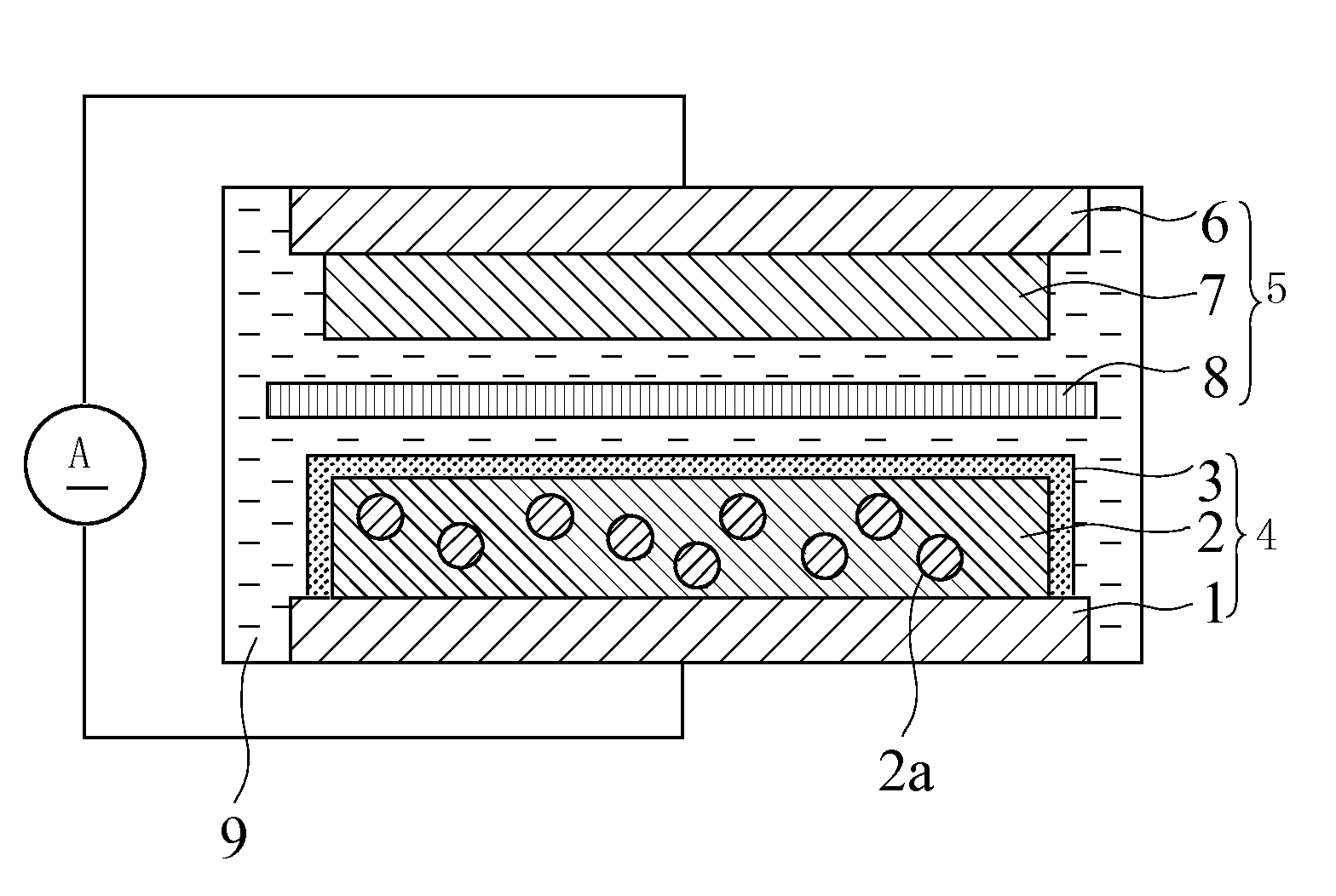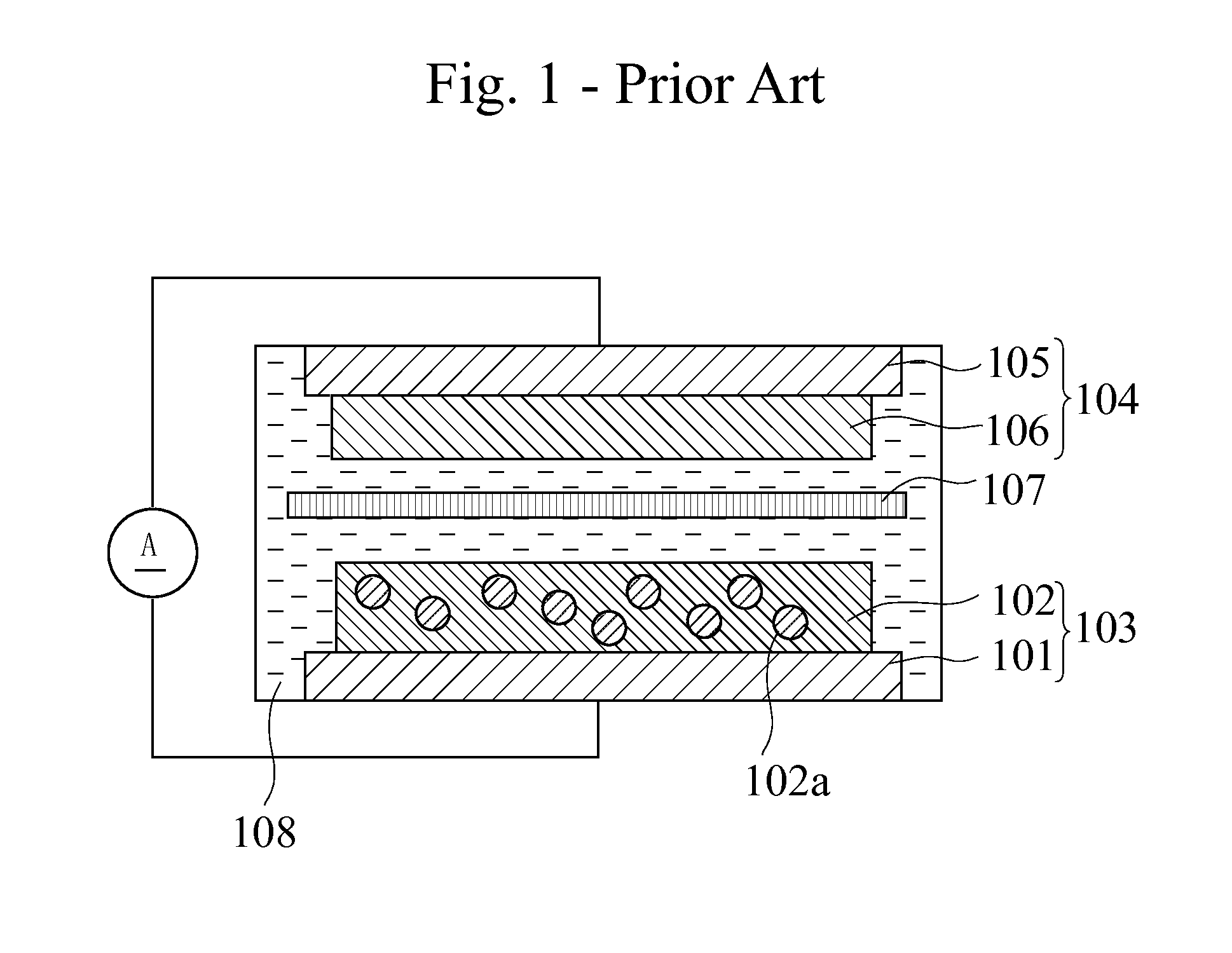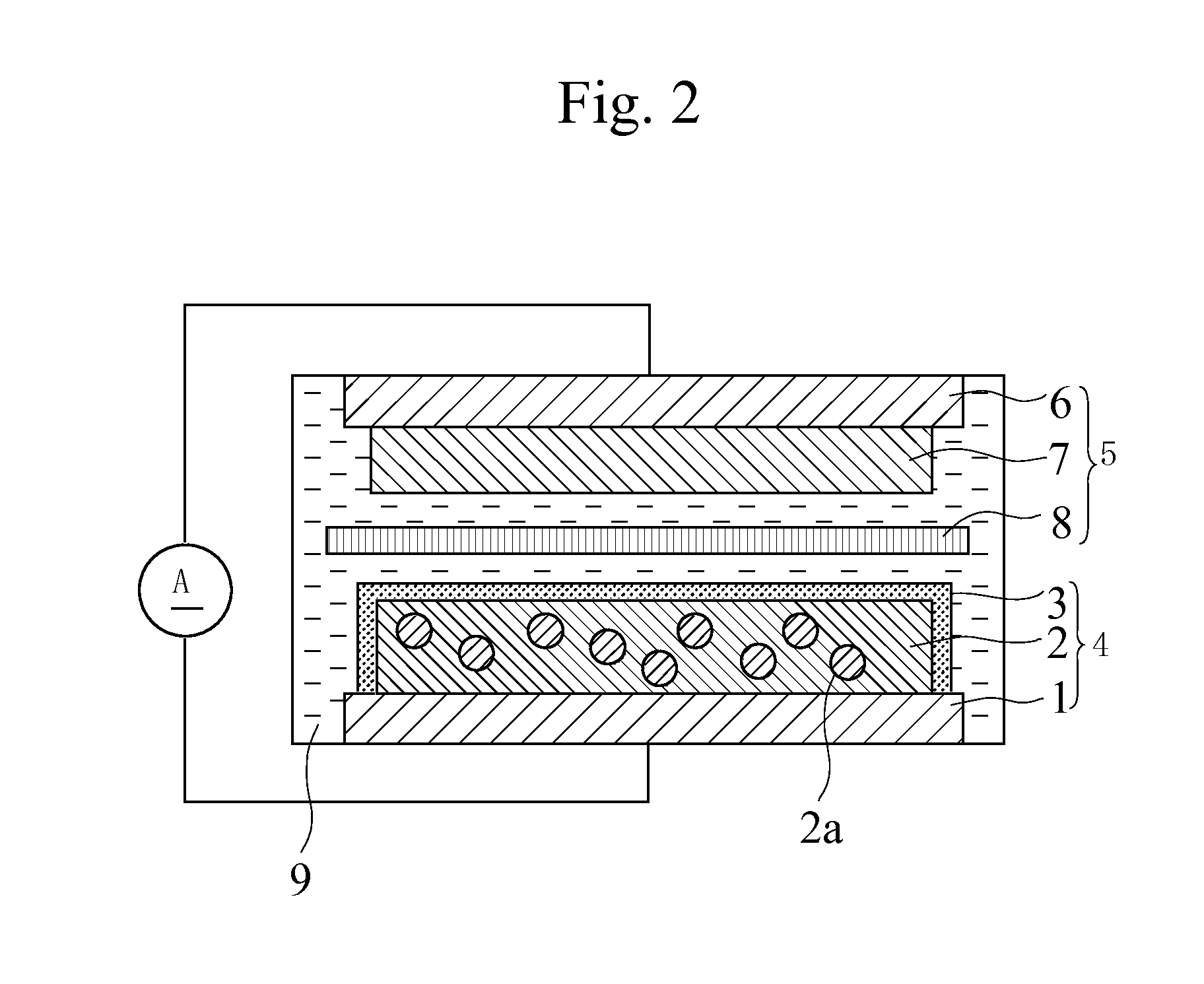Secondary battery and method for producing secondary battery
a secondary battery and secondary battery technology, applied in the direction of batteries, sustainable manufacturing/processing, cell components, etc., can solve the problems of battery capacity reduction, deterioration of charge-discharge efficiency, and reduction of migration efficiency of lithium ions, so as to improve the efficiency of ionic conduction and reduce the discharge capacity. , the effect of high charge-discharge efficiency
- Summary
- Abstract
- Description
- Claims
- Application Information
AI Technical Summary
Benefits of technology
Problems solved by technology
Method used
Image
Examples
example
Preparation of Battery Cell
[0108]A rubeanic acid represented by the chemical formula (1a) was prepared.
[0109]Then, 300 mg of the rubeanic acid, 600 mg of graphite powder as a conductive material, and 100 mg of polytetrafluoroethylene resin as a binder were respectively weighed, and these weighed materials were kneaded while being uniformly mixed as a whole to obtain a mixture.
[0110]Subsequently, the mixture was pressure-formed to prepare a sheet-shaped member having a thickness of about 150 μm. Then, the sheet-shaped member was dried at 70° C. for 1 hour in vacuum, and then punched out into a round shape with a diameter of 12 mm to prepare a positive electrode active material containing the rubeanic acid as a main component.
[0111]Further, polyvinylidene fluoride serving as a conductor material was dissolved in N-methyl-2-pyrrolidone as a solvent so as to be 10% by weight in concentration, and thereby, a conductor solution was prepared.
[0112]Then, the positive electrode active materi...
PUM
| Property | Measurement | Unit |
|---|---|---|
| thickness | aaaaa | aaaaa |
| cyclic structure | aaaaa | aaaaa |
| energy density | aaaaa | aaaaa |
Abstract
Description
Claims
Application Information
 Login to View More
Login to View More - R&D
- Intellectual Property
- Life Sciences
- Materials
- Tech Scout
- Unparalleled Data Quality
- Higher Quality Content
- 60% Fewer Hallucinations
Browse by: Latest US Patents, China's latest patents, Technical Efficacy Thesaurus, Application Domain, Technology Topic, Popular Technical Reports.
© 2025 PatSnap. All rights reserved.Legal|Privacy policy|Modern Slavery Act Transparency Statement|Sitemap|About US| Contact US: help@patsnap.com



